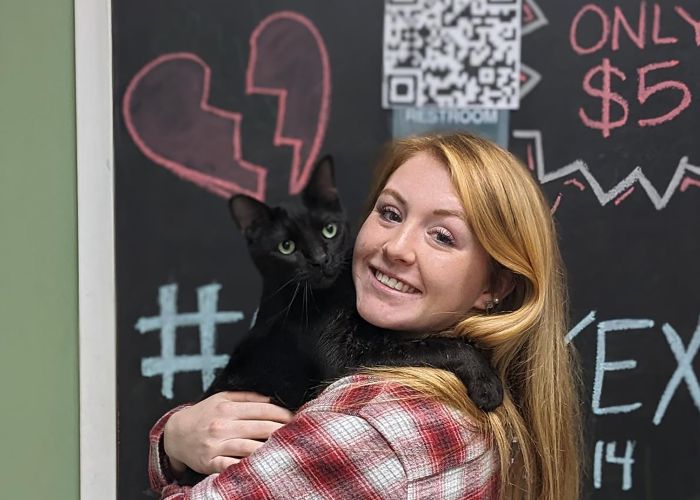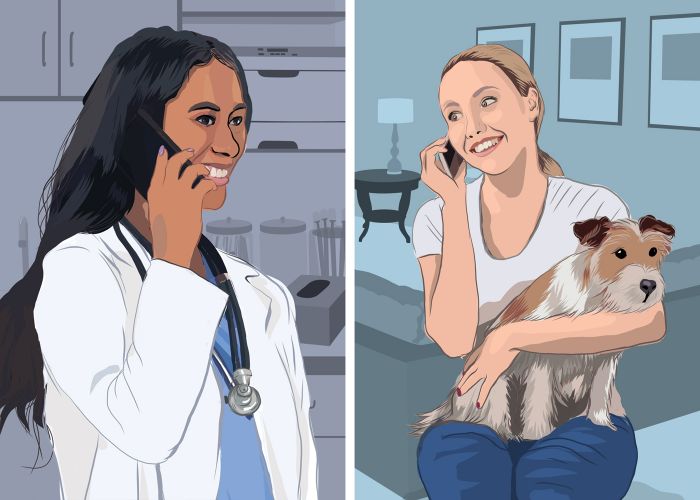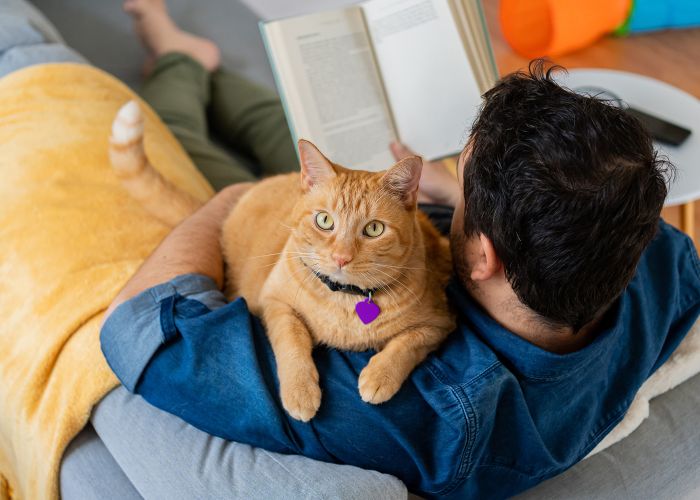Romping grounds
Doggy playgroups have a transformative effect on Ohio shelter
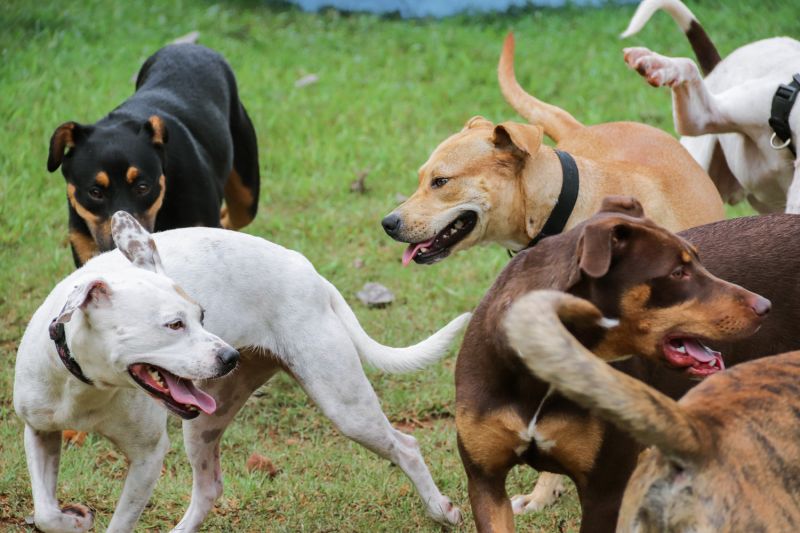
On a bright morning in mid-May, a mastiff mix with a head as big as a beachball leads a pack of dogs in a race down the length of a rectangular fenced yard. Paws flying, tails wagging and ears flapping, they look like they’re having the time of their lives.
Elsewhere in the yard, other pups have paired off to give chase around a play-castle or splash through plastic wading pools. One black-and-white terrier mix wriggles on her back in the grass, soliciting a wrestling match. A tangle of dogs rushes over to accept the invitation, and they playfully mouth at her neck.
It could be a typical spring day at a neighborhood dog park. But these are shelter dogs, and this is more than a fun outing: Time spent in play can make all the difference in their mental health, social skills and chances for adoption, says Mindy Naticchioni, administrator for the Cuyahoga County Animal Shelter in Ohio.
Every morning, volunteers with the shelter’s Unleashed program lead dogs out of their kennels and into the shelter’s play yards, where they can romp and socialize with compatible canines under the supervision of trained monitors.
The “rough-and-rowdies”—pups with boisterous play styles—come out first; after a night in the kennels, they’re the ones with the most pent-up energy to burn. Over the next five hours, groups dubbed the “littles” and the “gentle and dainties” will take their turns. By midafternoon, when playtime has ended, the shelter’s main kennel area, which houses about 70 dogs, is silent. “There’s not a noise to hear, even from the huge bluetick [hound],” says Naticchioni.
That’s just one of the benefits—big and small—the Cuyahoga team attributes to doggy playgroups. Since Unleashed launched in July 2015, “all our statistics started going in the right direction—volunteer hours started to fly up, adoptions went up, donations went up,” says Naticchioni. “It’s been the coolest thing.”

Grounds for play
The model for Cuyahoga’s Unleashed program originated in 1998, when trainer Aimee Sadler started working at the Southampton Animal Shelter in Hampton Bays, New York. She soon realized that there were a lot of super-stressed dogs in the kennels—too many for her to train individually. Her solution was to let them expend energy running around together before teaching them basic commands. Their behavior and demeanor improved markedly, and Sadler realized it was the time spent in group play that was having the biggest impact.
So after moving to Colorado in 2005, Sadler launched a similar program at the Longmont Humane Society. The sheltering field began to take notice. Before long, she was presenting the program she named Dogs Playing for Life at animal welfare conferences— to audiences with mixed reactions. Some people hailed it as an exciting step forward for canine enrichment in shelters; others thought it was downright scary.
It’s a response Sadler and her team still get today. After all, most shelters are designed for keeping dogs apart—for their own health and protection, as well as the safety of their human caretakers. And it’s true that any time you put strange dogs together there’s the potential for scuffles and shared germs. But none of the risks outweigh the advantages of bringing dogs together for socialization and play, says Emily Grossheider, chief innovation officer at Dogs Playing for Life, which became a separate nonprofit in 2015.
Over the past 10 years, the group has visited nearly 240 shelters around the U.S., teaching staff and volunteers how to implement playgroups in a way that minimizes the risks and maximizes the benefits to dogs and the shelter. Countless other organizations have relied on DPFL’s training manual and videos to launch programs.
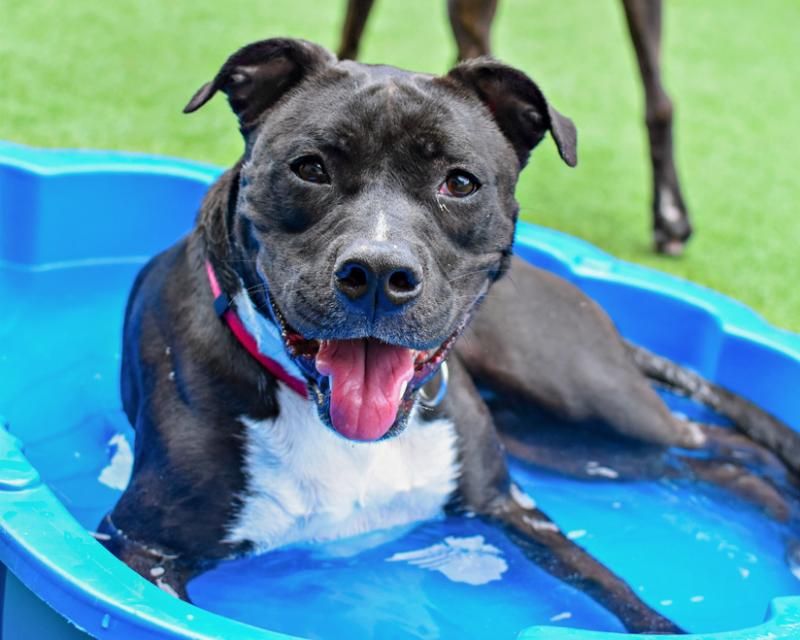
Shelters of all sizes, budgets and space constraints have successfully implemented this form of canine enrichment, says Grossheider, adding that the impact on smaller, under-resourced organizations can be particularly profound. “Some of the shelters we visit are handling a tremendous number of dogs with few staff and volunteers. Playgroups allow them to get every dog out of their kennels every day.”
The time invested in a playgroup program can be recouped in multiple ways. Empty kennels make cleaning easier and quicker. Dogs are less stressed, less susceptible to illness and easier to handle. “Shelters that implement playgroups actually see reduced bites on site,” Grossheider says.
With a clearer sense of individual dogs’ temperaments and how they interact with other pups, shelters are better-equipped to market them to potential homes. And with increased adoptions, staff and volunteers are caring for fewer animals for shorter lengths of time.
But even without all these benefits, Grossheider says, a playgroup program would be worthwhile for the way it enhances the quality of life for dogs in shelters. “This is what dogs are meant to do. When we isolate them … we take something away from them that we need to give back in some way.”
“This is what dogs are meant to do. When we isolate them … we take something away from them that we need to give back in some way.”
—Emily Grossheider, Dogs Playing for Life
Playback effects
When staff from the Cuyahoga shelter attended a weeklong DPFL workshop hosted by the nearby Cleveland Animal Protective League in the summer of 2015, they quickly grasped the potential of playgroups for their dogs.
As the county dog shelter, Cuyahoga is the place where city shelters transfer dogs who aren’t reclaimed by their owners. By the time dogs arrive at the facility, they could already be showing signs of kennel stress. Even with twice-daily walks by a cadre of volunteers, behavioral deterioration was a problem.
The Cuyahoga team returned from the training “completely blown away,” Naticchioni remembers, and their enthusiasm helped win over more hesitant staff and volunteers. Because the facility, which was constructed in 2002, already included five fenced yards, they were able to dive in right away.
The team’s initial approach to playgroups was “fly by the seat of our pants.” They started by letting dogs romp together three or four times a week, says Naticchioni. “As time went by, really cool things started happening.” Staffers started to get a more complete picture of dogs’ personalities. Time and again, a dog who had been labeled as dog-aggressive would reveal that he “loved other dogs … and lived here a lot longer than he should have.”
Buoyed by these early successes, the Cuyahoga team recruited more volunteers and crafted an action plan. Within weeks, playgroups were happening every day under the guidance of a handful of staffers and about 30 core volunteers. Meanwhile, videos of the dogs frisking around the yards began racking up thousands of views on social media sites.
Pit bull-type dogs—once the hardest to place—“started flying out the door,” says Naticchioni. Adopters “weren’t seeing a bully breed; they were seeing a dog who played well with others.”
Even people who weren’t in the market for a new pet recognized that something special was happening at the shelter. Donations started pouring in “like wildfire,” says Naticchioni. The play yards filled up with donated tunnels, bone-shaped wading pools, and a preschooler’s paradise of Little Tikes slides, climbers and other toys.
The overwhelming public support helped the shelter overcome some early challenges, including the inability of grass to withstand the constant trampling of canine feet. By late summer, the once verdant play yards had given way to packed dirt and eventually mud. “We were bathing everyone all the time,” says Naticchioni.
The shelter held a fundraiser that netted nearly $25,000—enough to cover the main play yards in artificial turf. “It was the largest fundraiser we ever had,” says Naticchioni.
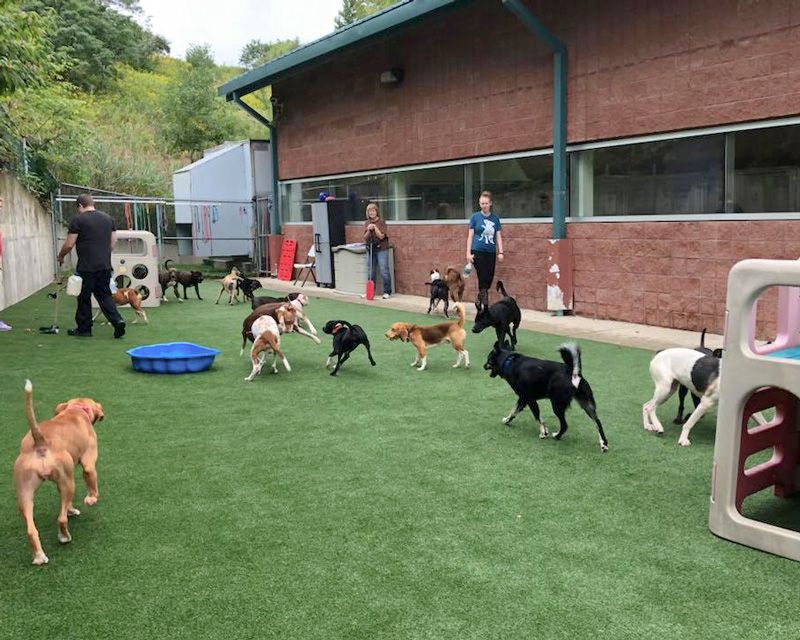
Another hurdle that first year was figuring out a cold-weather alternative to the play yards. The shelter had a large multi-vehicle garage, but the medical team worried that dogs would suffer cruciate tears and torn ligaments from slipping and sliding on the cement floor. Still, with no other good options, the Unleashed team gave it try. The animal services vehicles were moved outside and replaced with playground equipment and turf patches for bathroom breaks. The dogs naturally modified their play for the new surface, and injuries weren’t a problem.
Naticchioni draws from experiences like this when talking with staff at shelters that are considering a playgroup program. “Don’t let your fears hold you back,” she advises, whether it’s a concern for dogs injuring themselves in play or visions of bloody pack brawls.
“Everyone wants to know, ‘What about dogfights?’” she says. “I let them know that they may happen, but they don’t happen all the time. The more you do [playgroups], the less it happens, and the better your skills become.”

The art of play
Over the years, Unleashed staff and volunteers have continued to hone their skills by attending mentorship trainings in Longmont, Colorado, and Austin, Texas, and in 2017, the DPFL team came to Cuyahoga for onsite training.
The logistics of the Unleashed program are simple. Dogs—the Cuyahoga shelter has about 100 in its care at any given time—are assigned to different groups based largely on their play style. Volunteers designated as “runners” bring dogs in and out of the yards (or garage in winter months), where group leaders and assistants act as referees, using rattle paddles (a visual barrier designed for herding farm animals), spray bottles with water, air horns and plastic milk jugs filled with rocks to call fouls and intervene in squabbles before they escalate.
But there’s also an art to running a successful program, and it involves a keen understanding of the subtleties of canine dynamics, an intuition for how different personalities will mesh, and the nerves to let pups make peace on their own terms and to intervene only when necessary. As the pups frolic or simply sniff around the play yards, their human monitors keep a careful eye on body language and watch for signs that a dog is feeling overwhelmed, threatened or simply tired. Every evening, team members post about the day’s outings on a Facebook group page, sharing observations about individual dogs and tips for the next day’s volunteers.
While a playgroup program takes time and dedication, it’s the dogs who do the most important work, Naticchioni says. A stable pack will integrate a newcomer and teach her by example. Dogs who are shut down or shy of people, for example, can quickly lose their fear simply by mimicking the more confident dogs around them. “It’s really powerful to watch,” she says.
Perhaps most surprising is that playgroups can be an ideal teaching ground for dogs who don’t play nice with their own kind. Dogs like Melody, a Catahoula mix who had been attacked by three dogs in her former home and had decided that all dogs were a threat. “When we tried to bring her into playgroup, she was a lunatic,” says Unleashed volunteer Grace Vitale. “She didn’t even want to do a gate greeting.”
So Melody, like other iffy dogs, came into the play yard wearing a basket muzzle and trailing a leash, which gives the human monitors a safe way to pull dogs apart. Each day, she spent about five minutes in playgroup, which was all she could take, until she gradually regained her confidence around other dogs. “Two weeks ago, [Melody] was in a playgroup with 20 dogs and having a blast,” Vitale reports.
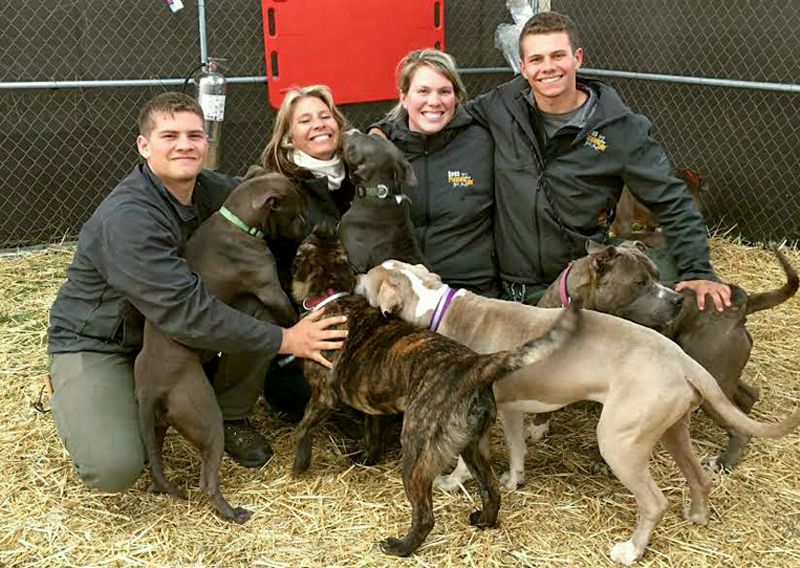
Playing at a new level
It’s not just individual dogs who have been transformed.
Vitale, who has volunteered at the Cuyahoga shelter for nearly a decade, remembers the old days, when about 40 percent of the dogs were euthanized and morale was low. “We didn’t have a lot of volunteers, because it was a heartbreaking place to be.”
Things started to improve with the 2012 repeal of a state law that prevented shelters from adopting out bully breeds, she says, and again under the leadership of Naticchioni, who was hired in 2013. But Vitale cites the playgroup program as “the No. 1 thing that has changed our shelter for the better.”
Over the past three years, Cuyahoga has gone from a facility with a 60-percent adoption rate that transferred out a lot of animals to one with a 91-percent live-release rate that seldom needs to transfer dogs to other shelters or rescues. A fuller picture of dogs’ personalities has resulted in better matches, as evidenced by a return rate that dropped from 8 percent to 4 percent. Last year, for the first time, Cuyahoga began taking in dogs from overwhelmed shelters in other Ohio counties.
Naticchioni now envisions a time when the shelter will be a training ground where staff from other organizations learn how to operate playgroups. “We’re at the top of our game,” she says. “It’s such a big part of what we do now.”
The success of the Unleashed program has already had a domino effect in the region, inspiring two local shelters—the Cleveland Animal Protective League and City Dogs—to launch their own playgroup programs. “The joy you see from the dogs: You just can’t help but feel better that we’re giving them that outlet,” says Sharon Harvey, CAPL president and CEO.
That may be the secret magic behind playgroups: Happiness in dogs is contagious to the people around them.
Cuyahoga has seen the results of that contagious positivity not only in higher adoptions and donations and the near doubling of volunteer numbers, but also in the way tensions between staff and volunteers have disappeared. “If you want to change a volunteer program, you start a playgroup program,” Naticchioni says. “Volunteers were so excited about the program and helping us. They started questioning us less about euthanasia decisions and started to trust us more. … We were literally working together as a team.”
It’s a new reality that the community wholeheartedly approves. Now, on any given day when the weather is decent, dozens of people will visit the shelter simply to watch the dogs play. They gather in the lobby, in front of a large picture window that overlooks the largest play yard. “People stand there and point and smile,” says Vitale. “They’ll lift their kids up to see over the ledge. It’s very cute.”
The dogs, in turn, are busy running or wrestling or sniffing butts or lying in the sun. Graceful and goofy, heartwarming and uncouth, dignified and silly, they’re dogs just being dogs, and that’s a good thing.



